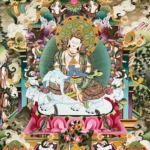About Bodhisattva

In Buddhism, Bodhisattva is the Sanskrit term for anyone who has generated Bodhicitta, a spontaneous wish, and compassionate mind to attain Buddhahood for the benefit of all sentient beings. Bodhisattvas are a popular subject in Buddhist art.




























